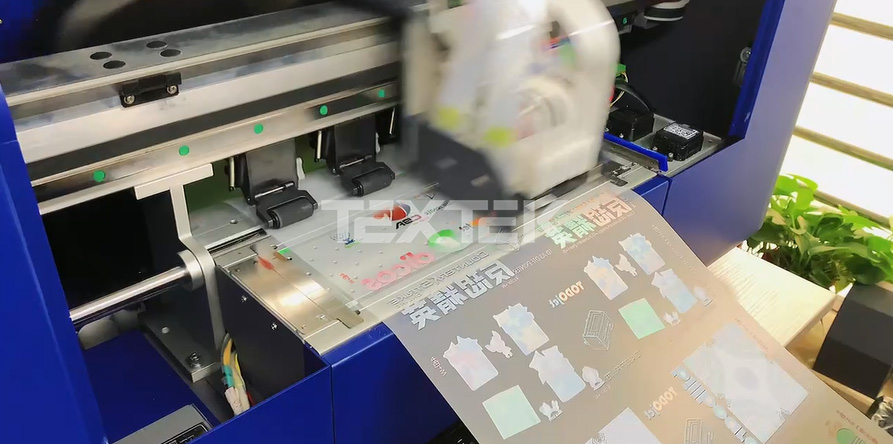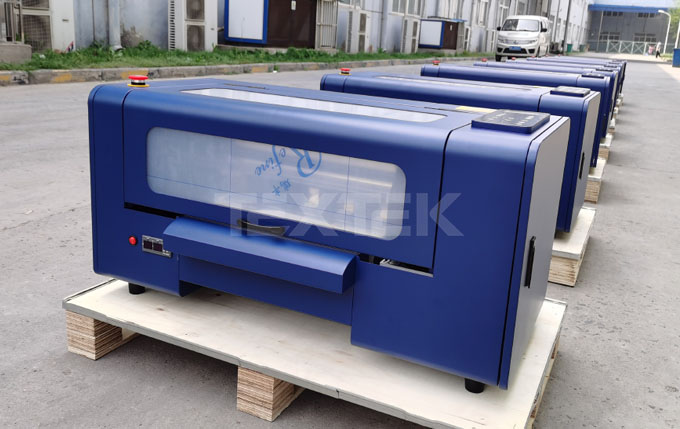Direct to film printing pros and cons

Direct to film printing is an exciting addition to clothing decor and cannot be ignored. If you avoided DTG printing in the past because of the pre-treatment you had to do with white ink, DTF breaks the cycle by not requiring pre-treatment while still providing the soft feel produced by water-based inks.
Direct transfer film printers offer reliability, unrivalled quality and excellent productivity. They can manage high volumes, which is crucial in this rapidly expanding field. Unlike DTG technology, direct transfer film printers are chosen by most people because they are less expensive and do not require any pre-processing. To print transfer films of high quality, you need DTF powder, sheets, and of course ink.
Another advantage of direct transfer film over ordinary printing is that it is highly environmentally friendly. You have no doubt that the fashion industry is increasingly concerned with sustainability.
Advantages of Direct to Film (DTF) printing
1. Suitable for a variety of materials
While direct garment printing works best on 100% cotton, DTF can be used on many different clothing materials: cotton, nylon, treated leather, polyester, 50/50 blends, and both light and dark fabrics. Transfer printing can even be applied to different types of surfaces such as luggage, shoes, and even glass, wood, and metal. You can expand your inventory by applying your designs to a variety of goods through DTF.

Want to start dtf printing business? Textek DTF printer is the best choice for you. DTF printer can for any color, any fabric t shirts, easy operation, make your business improved.
2. No preprocessing required
If you already own a DTG printer, you’re probably pretty familiar with the pre-processing process (not to mention drying times). The hot melt power applied to DTF transfers binds the printed matter directly to the material, which means no preprocessing is required!
3. Reduce the use of white ink
DTF requires less white ink — about 40 percent white ink, while DTG printing requires 200 percent white ink. White ink tends to be the most expensive because it is used more, so reducing the amount of white ink used in print can be quite money-saving.
4. More durable than DTG prints
There is no denying that DTG prints have a soft, almost non-tactile feel because the ink is applied directly to the garment. While DTF prints don’t have the soft feel that DTG can boast, transfer prints are more durable. Prints transferred directly to film wash well and are elastic — meaning they don’t crack or flake, making them ideal for heavy use items.
5. Easy to use
Printing on film transfer means you can put your designs on surfaces that are hard to reach or awkward. If the area can be heated, you can apply the DTF design to the area. Because only heat is required to stick the design, you can even sell your print transfer directly to your customers, allowing them to transfer the design to any surface or object they choose without the need for special equipment.
6. Faster production processes
Since you can eliminate the steps of pre-processing and drying garments, you can greatly reduce production time. That’s good news for one-time or small-volume orders that traditionally don’t make a profit.
7. Help keep your inventory for more uses
While it may not be feasible to print a batch of the most popular designs on every clothing size or color, with DTF printing you can print popular designs in advance and use very little space to store them. That way, you can have your best-selling product ready to use on any clothing item on demand
Disadvantages of DTF Printing
- The pattern feel a little hard, breathable poor, after washing will become softer, but breathability is still relatively poor.
- The pattern will have small cracks corresponding to the fabric fiber when pulling the heat transfer ironing T-shirt horizontally. This is caused by the characteristics of the heat transfer ironing itself, can not be avoided.
- T-shirt after high temperature ironing color will change, such as white will be yellow. This is due to the T-shirt with the moisture is evaporated caused
- Heat transfer printing using heat sublimation ink first print the picture on the transfer paper, and then transferred to the surface of the medium, there are several difficult to decide the problem: color deviation and positioning deviation, the finished picture is also relatively easy to scratch off, poor solidity, generally need to spray a protective film. In addition, the transfer of special media also need to do flexographic printing.
- The need for skilled printers with many years of experience.